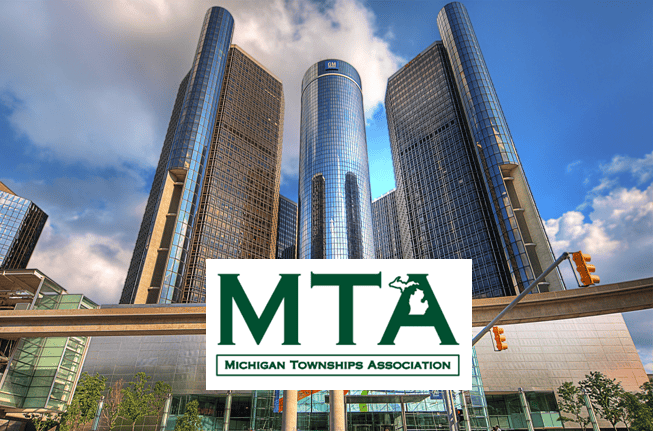
Adapted image. Original by Paul (Dex) Bica from Toronto, Canada
[CC BY 2.0 (http://creativecommons.org/licenses/by/2.0)], via Wikimedia Commons
SEMCOG is pleased to see so many visitors converging on Downtown Detroit this week, even if it means traffic is heavier, lines to lunch are longer, and parking spots are harder to find. While most of those visitors will be headed to the Cobo Center to see the North American International Auto Show, about 1,000 elected officials will take over the Renaissance Center for the Michigan Townships Association Annual Educational Conference.
In keeping with the educational theme, here are a few educational tidbits about townships. The seven-county SEMCOG region is home to 132 cities and villages and 119 townships. The region has the state’s largest township in population – Clinton Township in Macomb County – as well as the smallest township in area – Novi Township in Oakland County. The region was also home to the last two townships to be dissolved into a city, when Grosse Pointe Township in Wayne County and Lake Township in Macomb County were dissolved to become the City of Grosse Pointe Shores.
If you are ever reading Article VII of the Michigan Constitution (the article that deals with local government organization), you will notice that counties are described as being governed by the County Board of Supervisors. Our constitution was adopted with the concept that counties would be operated by boards that consisted of each township supervisor in the county, along with individuals representing the cities. Just after our constitution was adopted in 1963, the United States Supreme Court established the concept of one person, one vote, making this system questionable under the federal constitution. The legislature resolved the situation by converting to a county commission style of governance.
Finally, at one time, Michigan elected Justices of the Peace. Originally, township boards consisted of the Supervisor, Clerk, Treasurer, and two Justices of the Peace. The State Supreme Court determined that members of the judicial branch of government could not also serve in the legislative branch of government. This decision left townships without board members. The governor called for a special session of the legislature to deal with the issue, and the position of Township Trustee was created. By the way, the original law required Justices of the Peace to be sworn into office on the 4th of July.
Welcome to Detroit, MTA!

Leave a Reply